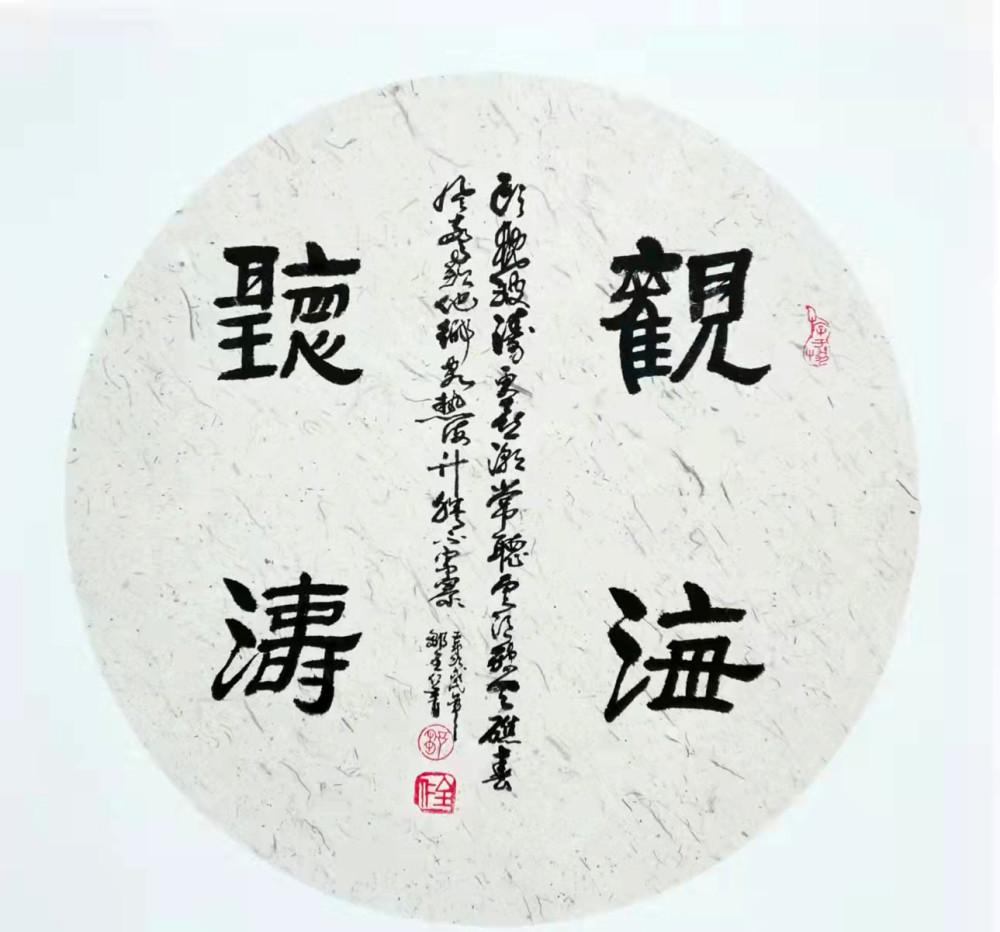When he was a child, Zou Quanren formed an indissoluble relationship with the four treasures of the literary room, "three thousand waste paper still hate less, and the new poem is also more than half a sentence." His calligraphy works, whether it is calligraphy or calligraphy, are not only masculine and strong, but also just soft, and initially formed an artistic style of elegance, simplicity and elegance.

Zou Quanren's calligraphy is based on tradition to form a unique and distinctive personal style, not only elegant and mellow, but also lively and lively, pleasing to the eye, tireless to see. He particularly emphasized learning calligraphy by drawing nourishment from the works of ancient masters, so that there are fewer detours. Readers can see the shadows of some ancient masters in Zou Quanren's dignified, elegant, clean, and decent handwriting, such as the roundness of Zhiyong and Zhao Mengfu, the slenderness of Ouyang Qian, the rigor of Liu Gongquan, and the fluency of Dong Qichang's grass. It can be said that his calligraphy has absorbed the characteristics of traditional masters and formed his own unique and distinctive calligraphic language.
Zou Quanren's calligraphy is mainly based on calligraphy, calligraphy, and cursive writing. He attaches great importance to the knot, and the structure of the script coincides with the "golden ratio". He deeply understood the essence of Qigong's "seeing the pen through the blade", was not blinded by the marks and residues, lost the ability to distinguish, learned to grasp the original writing characteristics and original meaning of the inscription calligraphy through the notches and residues, paid attention to the ink, and advocated the use of the pen to be natural.
For cursive writing, the orthography is very important, and the practice of grass must first be grass. Zou Quanren's cursive calligraphy mainly relies on strokes to make the trajectory to form cursive calligraphy, and his temperament is reflected in the dot painting. There are differences in the characters of the book, the words are not implicated, the fixed body has rules, the provinces have a source, the cursive and italics are written, and the law is complete. His calligraphy is interesting in the use of ink. It seems natural and unintentional, but in fact it is very ingenious, which is the natural expression of a calligrapher's ordinary pen and ink cultivation. Thick but not fat, empty places seem to be dry and plump. A stroke of ink, from thick to dry, is the process of natural writing, and the most virtual part of the book, virtual and real, natural and flexible. Between the virtual and the real, the overall feeling is transparent and not rigid. This method of using ink greatly enriches the visual effect.
In addition, the reader can clearly feel the flexibility of Zou Quanren's writing style, rather than the rigidity of the set character style, and his words have the feeling of ancient masterpieces, but they cannot find words that are similar to those used. If analyzed from a technical level, this writing state is true, rather than the "creation" of deliberate work, it is easy and free to swing, and there is no tackyness of shrinking hands and feet.
Characters are like his people, and it can be seen from Zou Quanren's calligraphy works that his personality is upright, his mind is open, his book knot is rigorous, his pen strength is solemn, and his dot painting is natural and has no mannerism. He often said that only by practicing calligraphy and meditating and having no worries about it can he create exquisite and natural calligraphy masterpieces, which may be similar to the supreme realm of "no sword in the hand, there is a sword in the heart" in martial arts novels.
Zou Quanren: Pen name Zisheng, a native of Lanzhou City, Gansu Province, with a university education. He is currently a member of the Council of the China Calligraphers and Painters Association, a member of the China Calligraphy Artists Association, a member of the China Electric Power Calligraphers Association, a director of the Beijing Municipal Gedong Chengzhong Calligraphy and Painting Institute, a member of the Shandong Artists Association, a member of the Shandong Provincial Calligraphy Artists Association, a standing director of the Yantai Book engraving artists association, a member of the Yantai Calligraphers Association, and a deputy secretary-general of the Yantai Stone Appreciation Research Association.
Mr. Zou has loved the art of calligraphy and painting since childhood, and has insisted on Linchi for many years, starting from the Erwang, Liu, Yan, Zhao, Qigong and other family law stickers, extensively dabbling in various genres, absorbing the strengths of hundreds of families, and the art of calligraphy is becoming more and more mature, especially in the study of Mr. Qigong's line and calligraphy. Over the past few decades, Mr. Zou's calligraphy works have won many awards in large-scale competitions in the army, provinces and the country. Among them, calligraphy works have been collected by friends in the United States, Canada, South Korea, Japan and other countries.